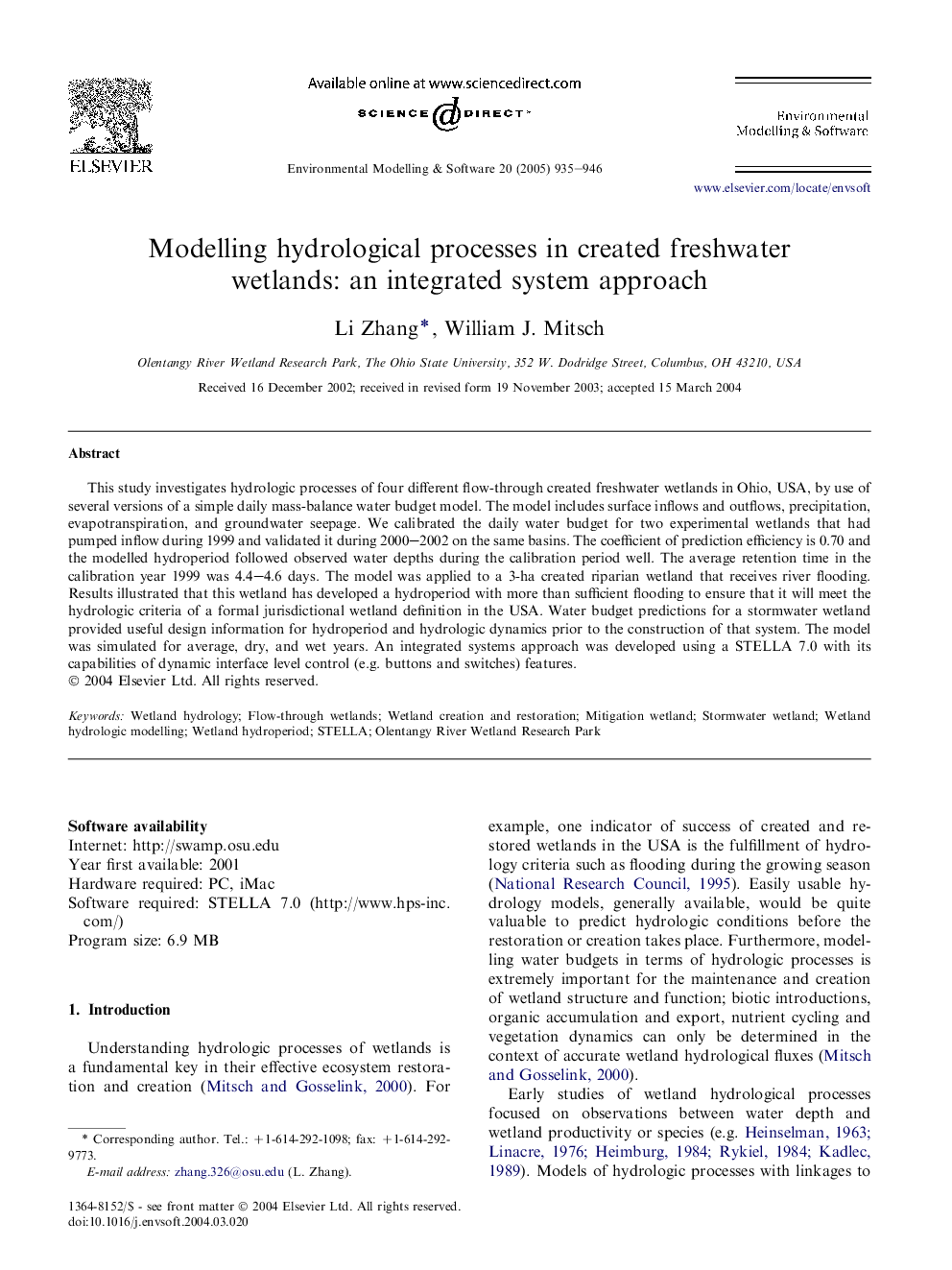| Article ID | Journal | Published Year | Pages | File Type |
|---|---|---|---|---|
| 10370884 | Environmental Modelling & Software | 2005 | 12 Pages |
Abstract
This study investigates hydrologic processes of four different flow-through created freshwater wetlands in Ohio, USA, by use of several versions of a simple daily mass-balance water budget model. The model includes surface inflows and outflows, precipitation, evapotranspiration, and groundwater seepage. We calibrated the daily water budget for two experimental wetlands that had pumped inflow during 1999 and validated it during 2000-2002 on the same basins. The coefficient of prediction efficiency is 0.70 and the modelled hydroperiod followed observed water depths during the calibration period well. The average retention time in the calibration year 1999 was 4.4-4.6 days. The model was applied to a 3-ha created riparian wetland that receives river flooding. Results illustrated that this wetland has developed a hydroperiod with more than sufficient flooding to ensure that it will meet the hydrologic criteria of a formal jurisdictional wetland definition in the USA. Water budget predictions for a stormwater wetland provided useful design information for hydroperiod and hydrologic dynamics prior to the construction of that system. The model was simulated for average, dry, and wet years. An integrated systems approach was developed using a STELLA 7.0 with its capabilities of dynamic interface level control (e.g. buttons and switches) features.
Keywords
Related Topics
Physical Sciences and Engineering
Computer Science
Software
Authors
Li Zhang, William J. Mitsch,
